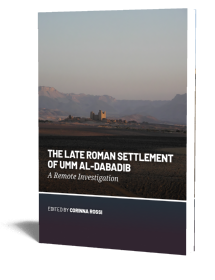Mudbrick Settlements of the Oman Peninsula
Inhabited – Abandoned – Re(dis)covered
Edited by Stephanie Döpper, Birgit Mershen, Josephine Kanditt, Irini Biezeveld & Thomas Schmidt-Lux | Forthcoming
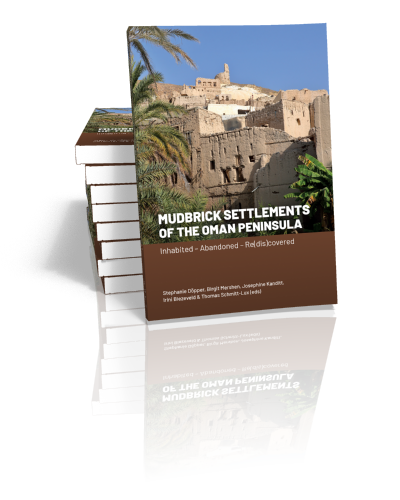
Mudbrick Settlements of the Oman Peninsula
Inhabited – Abandoned – Re(dis)covered
Edited by Stephanie Döpper, Birgit Mershen, Josephine Kanditt, Irini Biezeveld & Thomas Schmidt-Lux | Forthcoming
Paperback ISBN: 9789464264012 | Hardback ISBN: 9789464264029 | Imprint: Sidestone Press | Format: 182x257mm | ca. 150 pp. | Language: English | 5 illus. (bw) | 62 illus. (fc) | Keywords: archaeology; Oman; mudbrick; sociology; ethnography; architecture; heritage; settlements; conservation; preservation; urban and architectural heritage; heritage tourism | download cover | DOI: 10.59641/j0m6g7h8i9 | CC-license: CC BY 4.0
Publication date: 13-11-2025
-
Digital & Online access
Digital/Online version not (yet) available
-
Buy via Sidestone (EU & UK)
Get €5.00 discount on forthcoming books by using coupon code "PRE-ORDER" in your shopping cart!
-
Buy via our Distributors (WORLD)
For non-EU or UK destinations you can buy our books via our international distributors. Although prices may vary this will ensure speedy delivery and reduction in shipping costs or import tax. But you can also order with us directly via the module above.
For UK & other International destinations
For USA/Canada & other International destinations
-
Bookinfo
Paperback ISBN: 9789464264012 | Hardback ISBN: 9789464264029 | Imprint: Sidestone Press | Format: 182x257mm | ca. 150 pp. | Language: English | 5 illus. (bw) | 62 illus. (fc) | Keywords: archaeology; Oman; mudbrick; sociology; ethnography; architecture; heritage; settlements; conservation; preservation; urban and architectural heritage; heritage tourism | download cover | DOI: 10.59641/j0m6g7h8i9 | CC-license: CC BY 4.0
Publication date: 13-11-2025

We will plant a tree for each order containing a paperback or hardback book via OneTreePlanted.org.
Caught between the poles of remembering and forgetting, glorification and neglect, the abandoned mudbrick settlements (ḥārāt) of Oman are a vital object of conflicting processes of interpretation and negotiation. Adopting a diachronic perspective, the multi-disciplinary book’s chapters examine their past, present and future. The book presents approaches and results of archaeological, ethnographic, historical and sociological research on abandoned ḥārāt.
Oman’s landscape is dotted with abandoned mudbrick settlements and quarters, known as ḥārāt, either isolated in the countryside or surrounded by vibrant, modern urban centres. Most of them were abandoned during the economic upturn and opening of the country after Sultan Qaboos bin Said came to power in 1970. People’s move from traditional mudbrick to modern concrete houses led to the deterioration and decay of the physical substance of the mudbrick buildings. In the face of these conditions, various Omani and international actors have repeatedly warned against the uncontrolled loss of this valuable cultural heritage. The former inhabitants of the mudbrick houses and their descendants have also repeatedly emphasised their emotional attachment to these abandoned places and their personal significance to them. At the same time, others, especially tourists, have glorified the dilapidated state of the ruins as an aesthetically beautiful backdrop for a romanticised vision of the past.
This was the starting point for the interdisciplinary research project “The abandoned mudbrick settlements of central Oman: Between romanticisation and neglect”, funded by the Gerda Henkel Foundation as part of the “Lost Cities” programme between 2020 and 2022, and conducted by the editors of the present volume. It constitutes the proceedings of the closing conference of the project, in which team members present their results and leading experts give their input on inhabited, abandoned and re(dis)covered mudbrick settlements in the Sultanate of Oman.
Introduction: Mudbrick Settlements of the Oman Peninsula: Inhabited – Abandoned – Re(dis)covered
Stephanie Döpper, Birgit Mershen, Josephine Kanditt, Irini Biezeveld and Thomas Schmidt-Lux
Life Histories of Mudbrick Settlements in Central Oman
Stephanie Döpper and Irini Biezeveld
Memory and Belonging in the Bat Oasis, Oman
Ruth Young, with a contribution by Alasdair Brooks
Documentation of Omani Traditional Settlements (Ḥārāt): Reality and Aspirations
Ali bin Hamood Al Mahrooqi
Reclaimed, Rediscovered or Reinvented – The Changing Perceptions of Ḥārāt since the Omani Nahḍa
Birgit Mershen
Harat Al ʿAqr in Nizwa and Three Artistic Traditions
Soumyen Bandyopadhyay and Claudia Briguglio
#Mudbrick #Oman: On the Tourist Perception of Abandoned Ḥārāt Architecture
Josephine Kanditt and Thomas Schmidt-Lux
Modern Architectures vs ‘Pre-Modern’ Ḥārāt: Architecture Against the Tribes in Oman
Heike Delitz
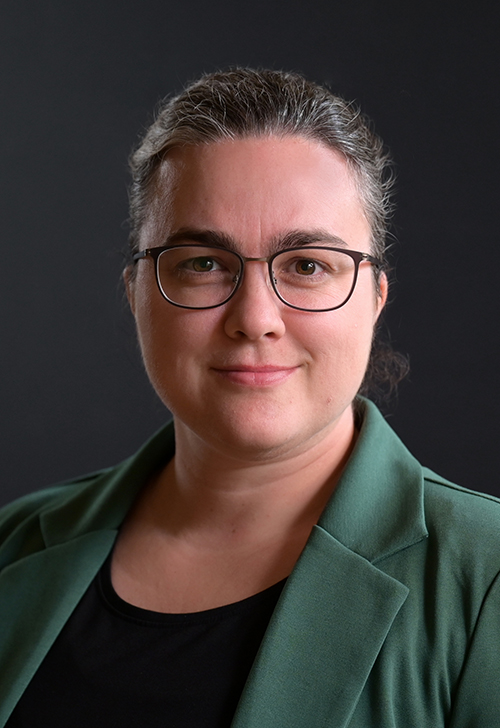
Dr. Stephanie Döpper
Stephanie Döpper is Junior Professor for Digital Humanities for Ancient Near Eastern Studies at the University of Würzburg, Germany. She received her doctoral degree from the University of Tübingen in 2015, and conducted postdoctoral research at the Universities of Leiden and Frankfurt on the reuse of tombs in Eastern Arabia and on settlement systems in central Oman. Her research interests include digital archaeology, landscape archaeology, the archaeology of mobility, pottery studies, and mortuary practices. Since 2010 she has been conducting research in the Sultanate of Oman, excavating Bronze Age and Islamic sites in Bat, Al-Ayn, Al-Khashbah and other sites in Wilayat Al-Mudhaybi.

Dr. Birgit Mershen
Birgit Mershen (Ph.D. Islamic Studies, Philology, Semitic Studies) is a research associate at Ruhr-University Bochum, taught at Yarmouk University, Jordan and Sultan Qaboos University, Oman, was an adviser to the Ministry of Heritage and Culture, and was co-lead of the GHS, Germany, funded research project ‘Lost Cities: Abandoned Settlements in Oman’.

Josephine Kanditt M.A.
Josephine Kanditt (M.A. Cultural Studies, B.A. Arabic-Islamic Studies/Social and Cultural Anthropology and Theatre Studies) is a PhD student at Leipzig University in the field of Cultural Sociology. She worked for the joint research project on abandoned mudbrick settlements in Central Oman funded by Gerda Henkel Foundation (2020-2022).
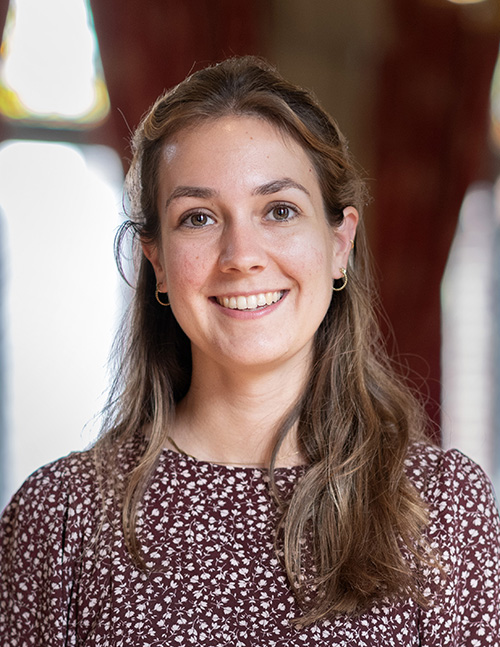
Dr. Irini Biezeveld
Irini Biezeveld is a curator of archaeology at the Drents Museum, Assen. She wrote her PhD at the Goethe University in Frankfurt am Main, Germany within the joint research project on abandoned mudbrick settlements in Central Oman, funded by the Gerda Henkel Foundation (2020-2022).
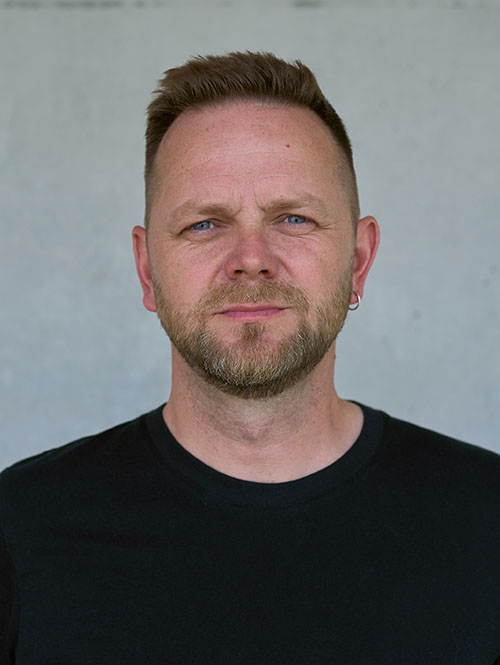
Prof. Dr. Thomas Schmidt-Lux
Thomas Schmidt-Lux is a professor at the University of Leipzig in the field of cultural sociology. He is interested in architecture, the city and religion and works with qualitative research methods.
Abstract:
Caught between the poles of remembering and forgetting, glorification and neglect, the abandoned mudbrick settlements (ḥārāt) of Oman are a vital object of conflicting processes of interpretation and negotiation. Adopting a diachronic perspective, the multi-disciplinary book’s chapters examine their past, present and future. The book presents approaches and results of archaeological, ethnographic, historical and sociological research on abandoned ḥārāt.
Oman’s landscape is dotted with abandoned mudbrick settlements and quarters, known as ḥārāt, either isolated in the countryside or surrounded by vibrant, modern urban centres. Most of them were abandoned during the economic upturn and opening of the country after Sultan Qaboos bin Said came to power in 1970. People’s move from traditional mudbrick to modern concrete houses led to the deterioration and decay of the physical substance of the mudbrick buildings. In the face of these conditions, various Omani and international actors have repeatedly warned against the uncontrolled loss of this valuable cultural heritage. The former inhabitants of the mudbrick houses and their descendants have also repeatedly emphasised their emotional attachment to these abandoned places and their personal significance to them. At the same time, others, especially tourists, have glorified the dilapidated state of the ruins as an aesthetically beautiful backdrop for a romanticised vision of the past.
This was the starting point for the interdisciplinary research project “The abandoned mudbrick settlements of central Oman: Between romanticisation and neglect”, funded by the Gerda Henkel Foundation as part of the “Lost Cities” programme between 2020 and 2022, and conducted by the editors of the present volume. It constitutes the proceedings of the closing conference of the project, in which team members present their results and leading experts give their input on inhabited, abandoned and re(dis)covered mudbrick settlements in the Sultanate of Oman.
Contents
Introduction: Mudbrick Settlements of the Oman Peninsula: Inhabited – Abandoned – Re(dis)covered
Stephanie Döpper, Birgit Mershen, Josephine Kanditt, Irini Biezeveld and Thomas Schmidt-Lux
Life Histories of Mudbrick Settlements in Central Oman
Stephanie Döpper and Irini Biezeveld
Memory and Belonging in the Bat Oasis, Oman
Ruth Young, with a contribution by Alasdair Brooks
Documentation of Omani Traditional Settlements (Ḥārāt): Reality and Aspirations
Ali bin Hamood Al Mahrooqi
Reclaimed, Rediscovered or Reinvented – The Changing Perceptions of Ḥārāt since the Omani Nahḍa
Birgit Mershen
Harat Al ʿAqr in Nizwa and Three Artistic Traditions
Soumyen Bandyopadhyay and Claudia Briguglio
#Mudbrick #Oman: On the Tourist Perception of Abandoned Ḥārāt Architecture
Josephine Kanditt and Thomas Schmidt-Lux
Modern Architectures vs ‘Pre-Modern’ Ḥārāt: Architecture Against the Tribes in Oman
Heike Delitz

Dr. Stephanie Döpper
Stephanie Döpper is Junior Professor for Digital Humanities for Ancient Near Eastern Studies at the University of Würzburg, Germany. She received her doctoral degree from the University of Tübingen in 2015, and conducted postdoctoral research at the Universities of Leiden and Frankfurt on the reuse of tombs in Eastern Arabia and on settlement systems in central Oman. Her research interests include digital archaeology, landscape archaeology, the archaeology of mobility, pottery studies, and mortuary practices. Since 2010 she has been conducting research in the Sultanate of Oman, excavating Bronze Age and Islamic sites in Bat, Al-Ayn, Al-Khashbah and other sites in Wilayat Al-Mudhaybi.

Dr. Birgit Mershen
Birgit Mershen (Ph.D. Islamic Studies, Philology, Semitic Studies) is a research associate at Ruhr-University Bochum, taught at Yarmouk University, Jordan and Sultan Qaboos University, Oman, was an adviser to the Ministry of Heritage and Culture, and was co-lead of the GHS, Germany, funded research project ‘Lost Cities: Abandoned Settlements in Oman’.

Josephine Kanditt M.A.
Josephine Kanditt (M.A. Cultural Studies, B.A. Arabic-Islamic Studies/Social and Cultural Anthropology and Theatre Studies) is a PhD student at Leipzig University in the field of Cultural Sociology. She worked for the joint research project on abandoned mudbrick settlements in Central Oman funded by Gerda Henkel Foundation (2020-2022).

Dr. Irini Biezeveld
Irini Biezeveld is a curator of archaeology at the Drents Museum, Assen. She wrote her PhD at the Goethe University in Frankfurt am Main, Germany within the joint research project on abandoned mudbrick settlements in Central Oman, funded by the Gerda Henkel Foundation (2020-2022).

Prof. Dr. Thomas Schmidt-Lux
Thomas Schmidt-Lux is a professor at the University of Leipzig in the field of cultural sociology. He is interested in architecture, the city and religion and works with qualitative research methods.
-
Digital & Online access
Digital/Online version not (yet) available
-
Buy via Sidestone (EU & UK)
Get €5.00 discount on forthcoming books by using coupon code "PRE-ORDER" in your shopping cart!
-
Buy via our Distributors (WORLD)
For non-EU or UK destinations you can buy our books via our international distributors. Although prices may vary this will ensure speedy delivery and reduction in shipping costs or import tax. But you can also order with us directly via the module above.
For UK & other International destinations
For USA/Canada & other International destinations
- Browse all books by subject
-
Search all books

We will plant a tree for each order containing a paperback or hardback book via OneTreePlanted.org.
You might also like:
© 2025 Sidestone Press KvK nr. 28114891 Privacy policy Sidestone Newsletter Terms and Conditions (Dutch)

